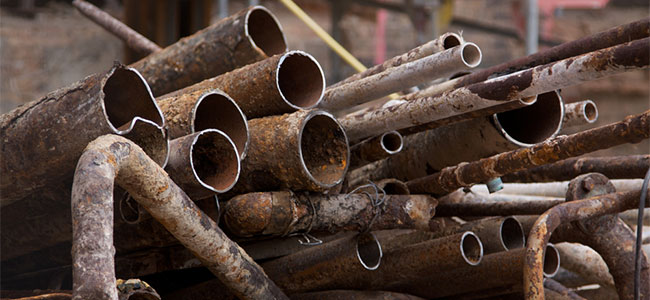
NIOSH Releases New Guidelines to Protect Workers From Lead Exposure
The organization aims to educate workers and reduce their exposure to lead hazards.
- By Robert Yaniz Jr.
- Nov 07, 2023
In response to the health risks of lead pipe removal and replacement, the National Institute for Occupational Safety and Health (NIOSH) has released a new set of guidelines to protect workers.
According to a release dated Nov. 3, the new resource, “Workplace Solutions: Reducing Workers’ Lead Exposure during Water Service Line Removal and Replacement,” offers a blueprint for reducing lead hazards that may occur when workers are replacing lead pipelines carrying supply water. Lead exposure is a significant risk for workers in plumbing, city utilities or construction, who may transfer lead residue home with them when they leave the worksites.
“Recent efforts to improve municipal water systems and protect public health by removing and replacing lead water service lines in the U.S. potentially exposes workers to lead-contaminated pipes and soil,” NIOSH Director John Howard, M.D., said in a statement. “It’s important for employers and workers to be aware of the potential for lead exposure and take steps such as those outlined in NIOSH’s Workplace Solutions document to protect the safety and health of all workers involved in lead pipe replacement activities.”
NIOSH's recommendations are founded on the hierarchy of controls, a system to minimize or eliminate exposure to hazards. Among the proposed measures are the development of a written lead monitoring program, airborne lead exposure monitoring and the use of portable HEPA-filtered vacuums for cleaning work vehicles. Additionally, NIOSH suggests improved training, testing, and housekeeping protocols.
For front-line workers, best practices include cleaning work surfaces regularly, keeping personal items away from contaminated zones, and using PPE to reduce the risk of lead exposure. These guidelines stem from a 2019 health hazard evaluation, which revealed that while air samples were below occupational exposure limits, there were detectable levels of lead on workers' hands, gloves, and various surfaces within work vehicles and locker rooms.
“Workplace Solutions: Reducing Workers’ Lead Exposure during Water Service Line Removal and Replacement” is available to read in full on the NIOSH webpage.
About the Author
Robert Yaniz Jr. is the former Content Editor of Occupational Health & Safety.